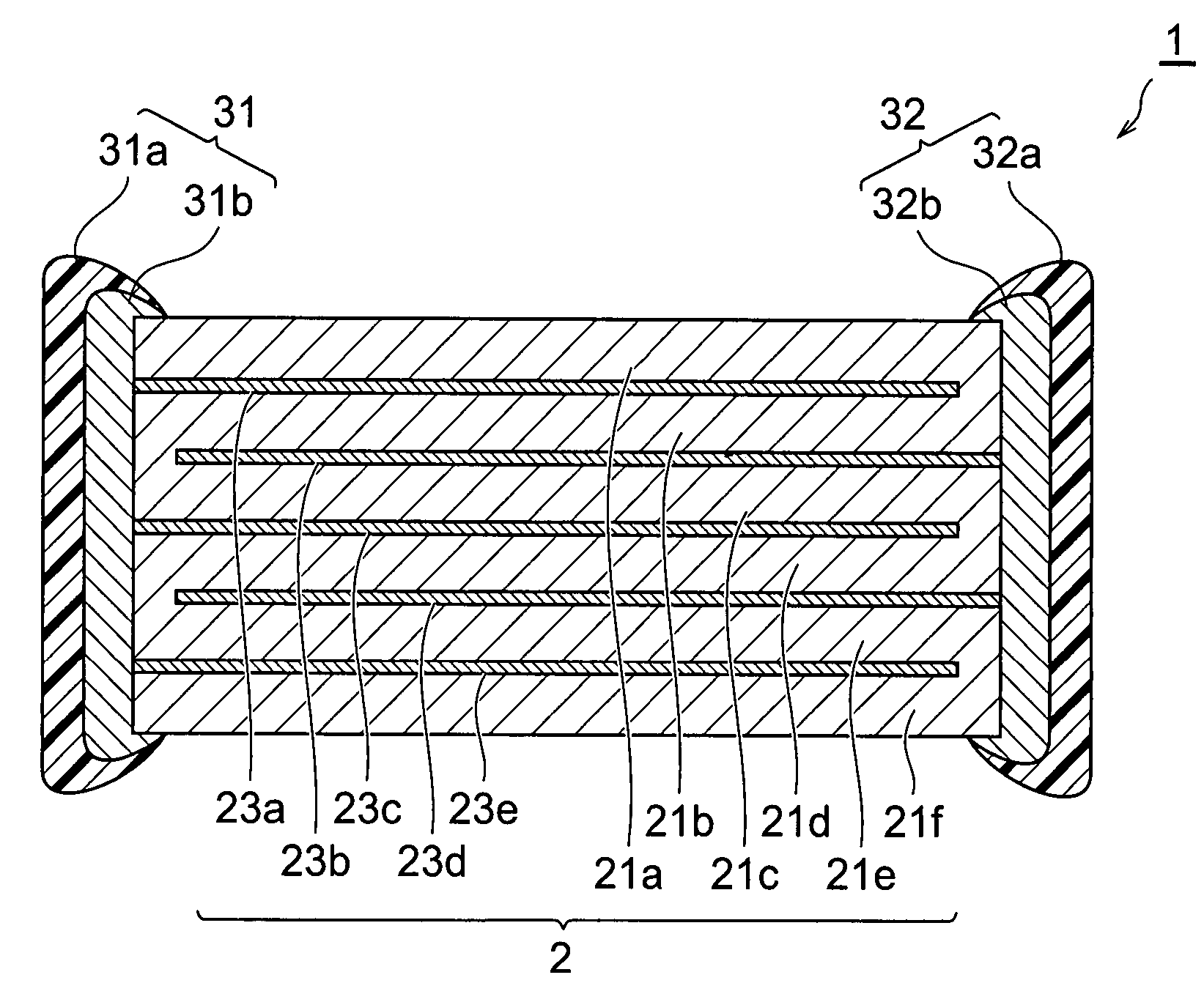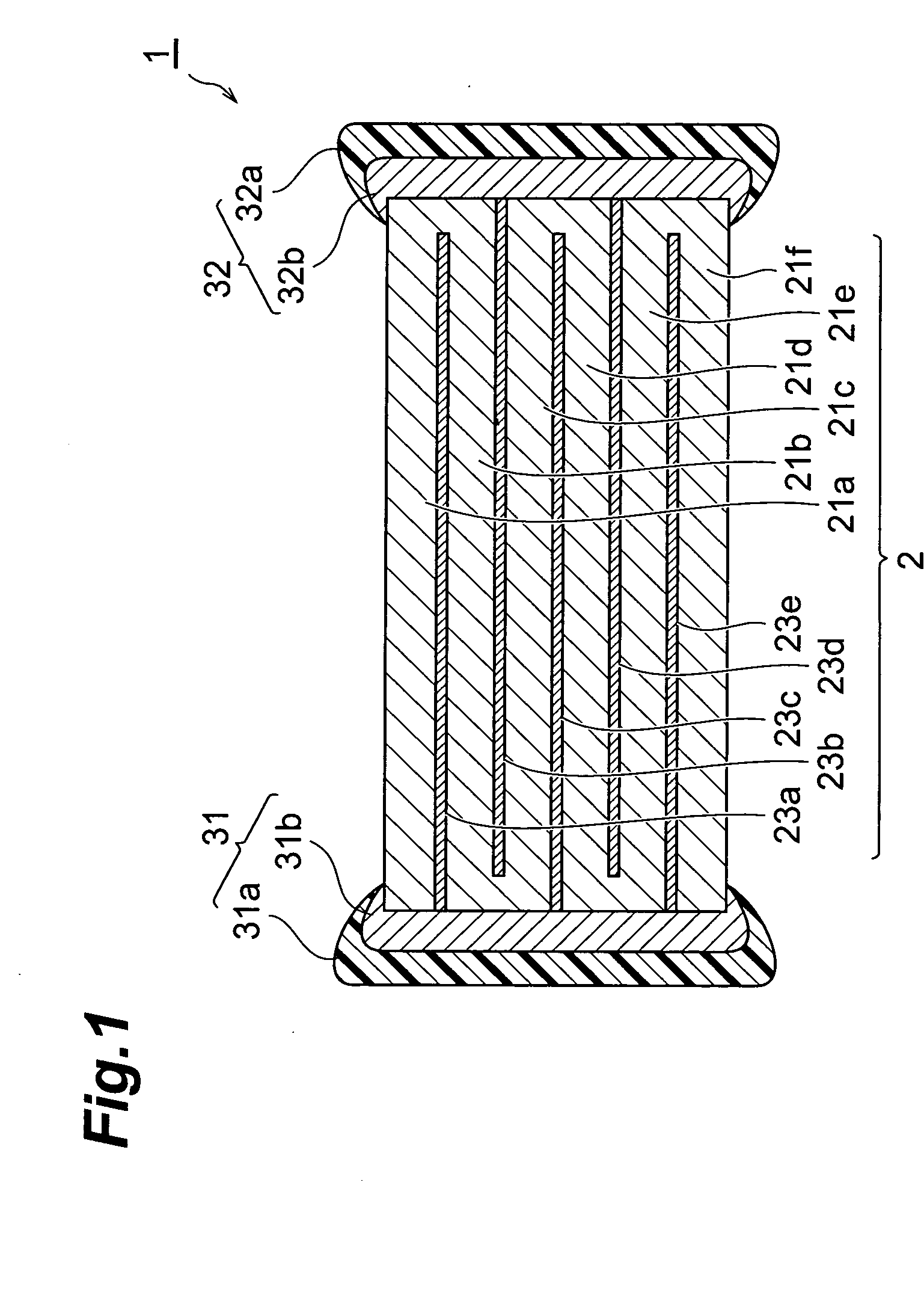Laminate type electronic component
- Summary
- Abstract
- Description
- Claims
- Application Information
AI Technical Summary
Benefits of technology
Problems solved by technology
Method used
Image
Examples
example 1
[0079] In the following procedure, the laminated ceramic capacitor shown in FIGS. 1 and 2 was made.
[0080] First, using 110 dielectric layers (in each of which a dielectric to become a constituent material was mainly composed of BaTiO3 with a thickness of 2 to 10 μm) having a rectangular parallelepiped shape, and internal electrodes, each formed like a rectangular plate (with a thickness of 1 to 2 μm) made of Ni, disposed one by one between two layers adjacent each other among the dielectric layers, a laminate (green sheet) made of 110 dielectric layers having a configuration in which the internal electrodes alternated with the dielectric layers was made by a known manufacturing technique.
[0081] More specifically, a paste containing a dielectric material was prepared, and then each dielectric layer was formed from this paste by doctor blading. Each internal electrode comprising Ni was formed by preparing a Ni paste mainly composed of Ni and then printing this paste on each dielectr...
examples 2 and 3
[0088] Laminated ceramic capacitors were made in the same procedure under the same condition as with Example 1 except that respective conductive particle contents in each of the resin electrode layers in the first and second external electrodes were adjusted to their corresponding values shown in Table 1, and that respective particles having their corresponding aspect ratios and average longitudinal lengths shown in Table 1 were used as the acicular particles (particles made of Ag).
examples 4 to 15
[0089] Laminated ceramic capacitors were made in the same procedure under the same condition as with Example 1 except that respective conductive particle contents in each of the resin electrode layers in the first and second external electrodes were adjusted to their corresponding values shown in Table 1, that respective particles having their corresponding aspect ratios and average longitudinal lengths shown in Table 1 were used as the acicular particles (particles made of Ag), and that respective particles having their corresponding average particle sizes shown in Table 1 were used as spherical particles (particles made of Ag).
PUM
 Login to View More
Login to View More Abstract
Description
Claims
Application Information
 Login to View More
Login to View More - R&D
- Intellectual Property
- Life Sciences
- Materials
- Tech Scout
- Unparalleled Data Quality
- Higher Quality Content
- 60% Fewer Hallucinations
Browse by: Latest US Patents, China's latest patents, Technical Efficacy Thesaurus, Application Domain, Technology Topic, Popular Technical Reports.
© 2025 PatSnap. All rights reserved.Legal|Privacy policy|Modern Slavery Act Transparency Statement|Sitemap|About US| Contact US: help@patsnap.com



